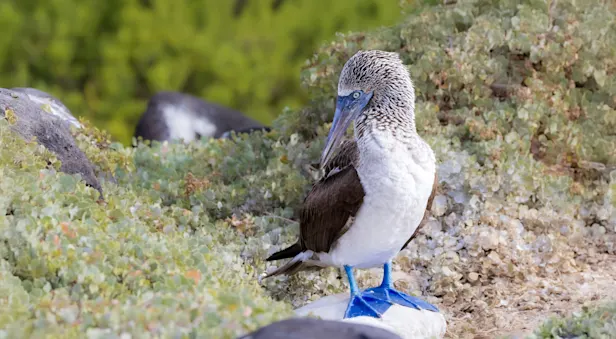
Know Before You Go


Introduced Species in the Galapagos Islands
Introduced species are the most serious threat to native plants and animals and threaten the fragile ecosystems in the Galapagos. In the 1600s, humans visited the islands and brought plants and animals that otherwise would not have arrived.
Black rats and house mice came as stowaways on ships. In the 1800s, settlers brought domestic animals such as horses, cattle, donkeys, goats, pigs, dogs and cats that escaped or were abandoned. Today, only 2 out of 14 major islands remain untouched by introduced mammals, and new introductions still occur.
Subsequently, feral populations formed and are today found throughout the islands. The native plants and animals did not have time to develop a defense against the new predators, and the impact has been devastating. On Santiago Island, for example, wild pigs snatch the eggs of sea turtles; on Santa Cruz, wild dogs attack large colonies of land iguanas; on the island of Pinzon, rats have killed every giant tortoise hatchling, leaving only an ever-aging adult population of that subspecies. Goats wipe out huge stands of native plants, reducing the vegetation to lifeless shrubs. This not only causes extinction of the plant species and soil erosion, but it also robs the native wildlife of food. The goats’ rapid reproduction rate magnifies the problem.
The list of aggressive introduced plants in Galapagos is more than 500 species. These invasive plants rob native plants of sunlight, water and nutrients. The passion fruit vine climbs native trees and blocks out the sun. The common blackberry overtakes areas with large, thorny tickets. The guava tree, introduced by early settlers, has formed large forests on four inhabited islands and is still spreading. Quinine, introduced to Santa Cruz in 1946, has drastically altered the rare miconia vegetation zone. Lantana, brought to Floreana Island in 1938, has created dense thickets in nesting areas of the endangered dark-rumped petrel, impeding access to the bird’s nest burrows.
Header photo: Chris Willis
Browse Our Galapagos Wildlife Adventures

Galapagos Wildlife Photo Expedition
The ultimate Galapagos photography adventure! Capture amazing wildlife close-ups as we explore 15 diverse islands in 17 days—plus an overnight among wild giant tortoises at our private Tortoise Camp.

Galapagos Discovery: The Nat Hab Experience
Small-group adventures aboard your choice of private yachts, led by our outstanding naturalist guides and photography pros. Snorkel and swim with sea lions, sea turtles and penguins on this incomparable nature odyssey.






























